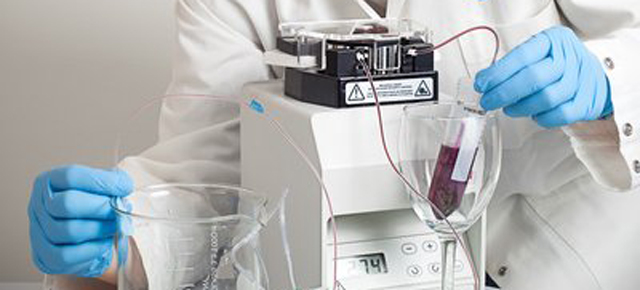Wine-tasting notes are famous for their verbal flourishes — for example, “kirsch, dried beef and baker’s chocolate” — but the liquid is ultimately just a collection of molecules, some sour, some bitter, some dry. And we’re getting better at quantifying taste. A newly developed artificial tongue uses the very proteins from our mouths to measure the dryness of wine.
Cracking “taste” has been so hard because it is actually comprised of at least three senses: taste (as in sweet, salty, etc), smell, and mouthfeel. There are artificial tongues that can taste sweetness and even artificial tongues that feel the smoothness of fat in the mouth. A new study published in ACS Nano describes an artificial tongue that detects the effects of tannins, the molecules that give wine their astringency, in the mouth. To do that, the machine actually uses proteins found in human saliva.
Researchers at Aarhus University in Denmark made a sensor that looks at surface plasmon resonance (SPR), or the oscillation of electrons in a material when hit by light. When the oscillation pattern changes, you know that molecules in the material have bound together. IEEE Spectrum‘s Dexter Johnson explains how it all works together:
The design of the SPR-based nanosensor in this case involves a small plate coated with gold nanoparticles. The researchers then put some of the proteins found in human saliva on the plate. When the wine comes in contact with the plate, the gold nanoparticles act like a lens that can focus a beam of light below the diffraction limit so that it becomes possible to measure down to 20 nanometers. This makes it possible to follow the salivary proteins and see how the interaction with the wine impacts them.
A small sensor has some advantages over a living, breathing human wine taster, especially in the middle of the winemaking process. The artificial tongue could be used to monitor wine continuously while it is still developing. And, in liquids like medicine where dryness is not desirable, an astringency sensor could be used to help develop them. Watch out, professional tasters. [IEEE Spectrum, ACS Nano]
Picture: Aarhus University
